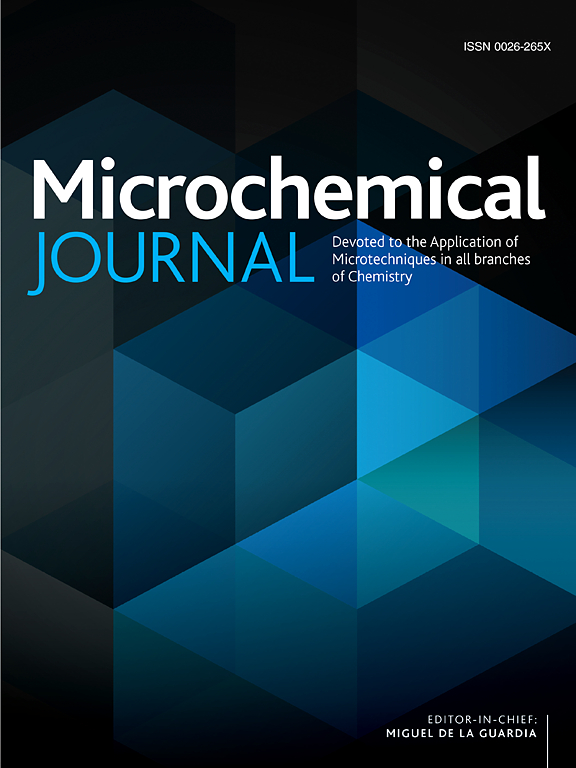A greener approach for analysis of tafenoquine succinate in presence of their potential degradation impurities with comprehensive characterization of degradation products by Orbitrap-LCMS and NMR
IF 4.9
2区 化学
Q1 CHEMISTRY, ANALYTICAL
引用次数: 0
Abstract
Establishment of a stability-indicating analytical method (SIAM) is crucial for analysis of pharmaceutical substances in presence of degradation impurities. This study aimed to establish a green analytical approach for quantifying tafenoquine in presence of its degradation products (DP) which formed via chemical breakdown of the drug. The objective was also to characterize various unknown DPs using Orbitrap-LCMS and NMR. Tafenoquine was exposed to hydrolytic, thermal, photolytic, and oxidative stress conditions. The drug exhibited susceptibility under acidic, neutral, oxidative, and photolytic conditions, leading to the formation of 10 new DPs. To characterize them, the fragmentation of tafenaquine was first studied using a multistage Orbitrap-LCMS system. Degradation impurities in each stress sample were then separated using a newly developed, green, sensitive, and specific RP-HPLC method, employing Eclipse plus-C18 column and ammonium formate as buffer. This method was subsequently adapted to an Orbitrap-LCMS system with an extended runtime for further characterization. Mechanistic explanations were provided for each impurity generated under different stress conditions. Among the 10 degradation products, DP7 was identified as major impurity which was isolated, and characterized using 1H NMR spectroscopy. The toxicity potential of identified DPs was evaluated in silico using ProTox 3.0 software. Greenness of developed SIAM was assessed through Analytical GREEness metric and Green Analytical Procedure Index, demonstrating its eco-friendly nature. These findings will aid pharmaceutical industry in optimizing storage conditions and improving stability and safety profile of tafenoquine formulations. The developed SIAM can be used by analytical laboratories and pharmaceutical industries for tafenoquine stability testing.

求助全文
约1分钟内获得全文
求助全文
来源期刊

Microchemical Journal
化学-分析化学
CiteScore
8.70
自引率
8.30%
发文量
1131
审稿时长
1.9 months
期刊介绍:
The Microchemical Journal is a peer reviewed journal devoted to all aspects and phases of analytical chemistry and chemical analysis. The Microchemical Journal publishes articles which are at the forefront of modern analytical chemistry and cover innovations in the techniques to the finest possible limits. This includes fundamental aspects, instrumentation, new developments, innovative and novel methods and applications including environmental and clinical field.
Traditional classical analytical methods such as spectrophotometry and titrimetry as well as established instrumentation methods such as flame and graphite furnace atomic absorption spectrometry, gas chromatography, and modified glassy or carbon electrode electrochemical methods will be considered, provided they show significant improvements and novelty compared to the established methods.
 求助内容:
求助内容: 应助结果提醒方式:
应助结果提醒方式:


